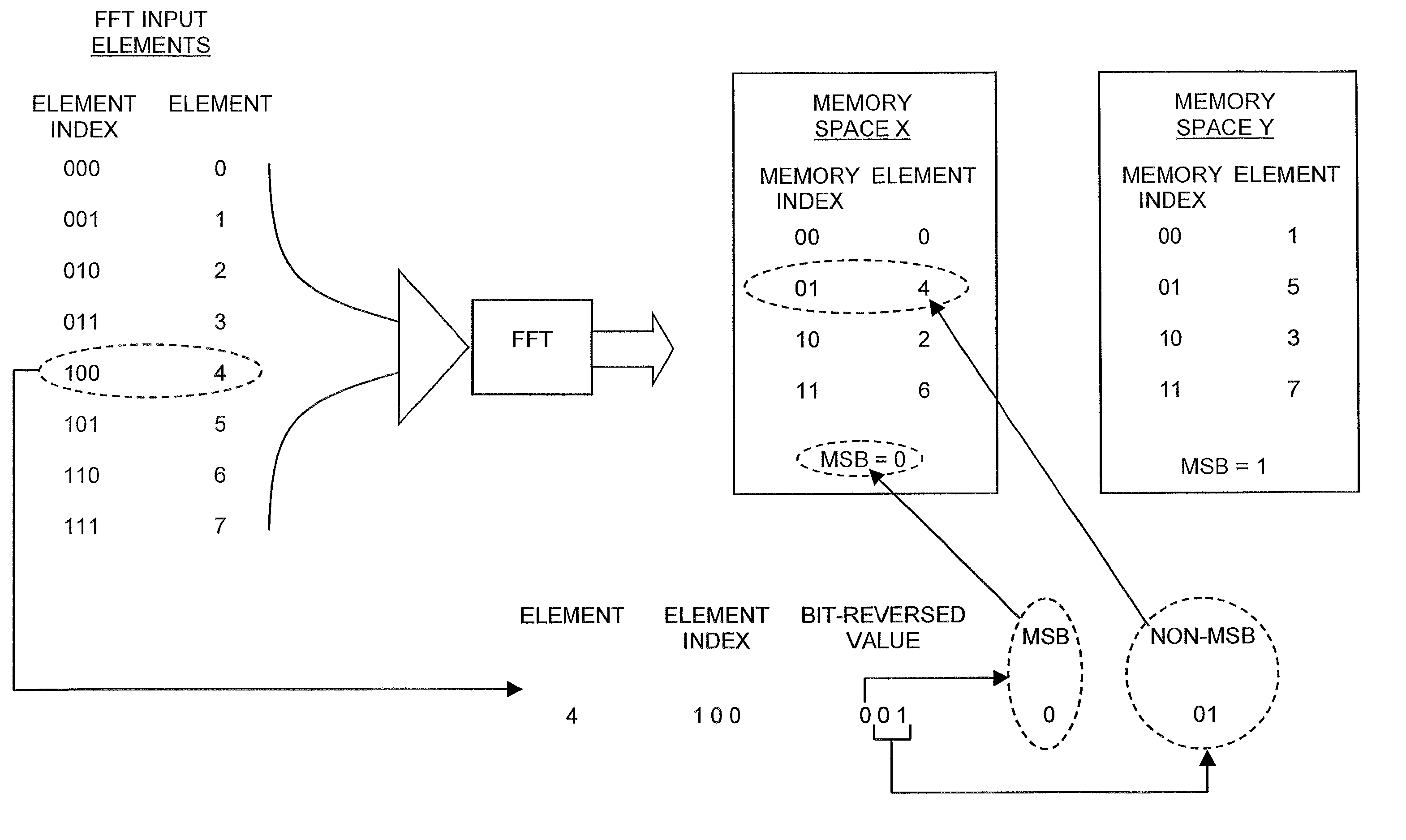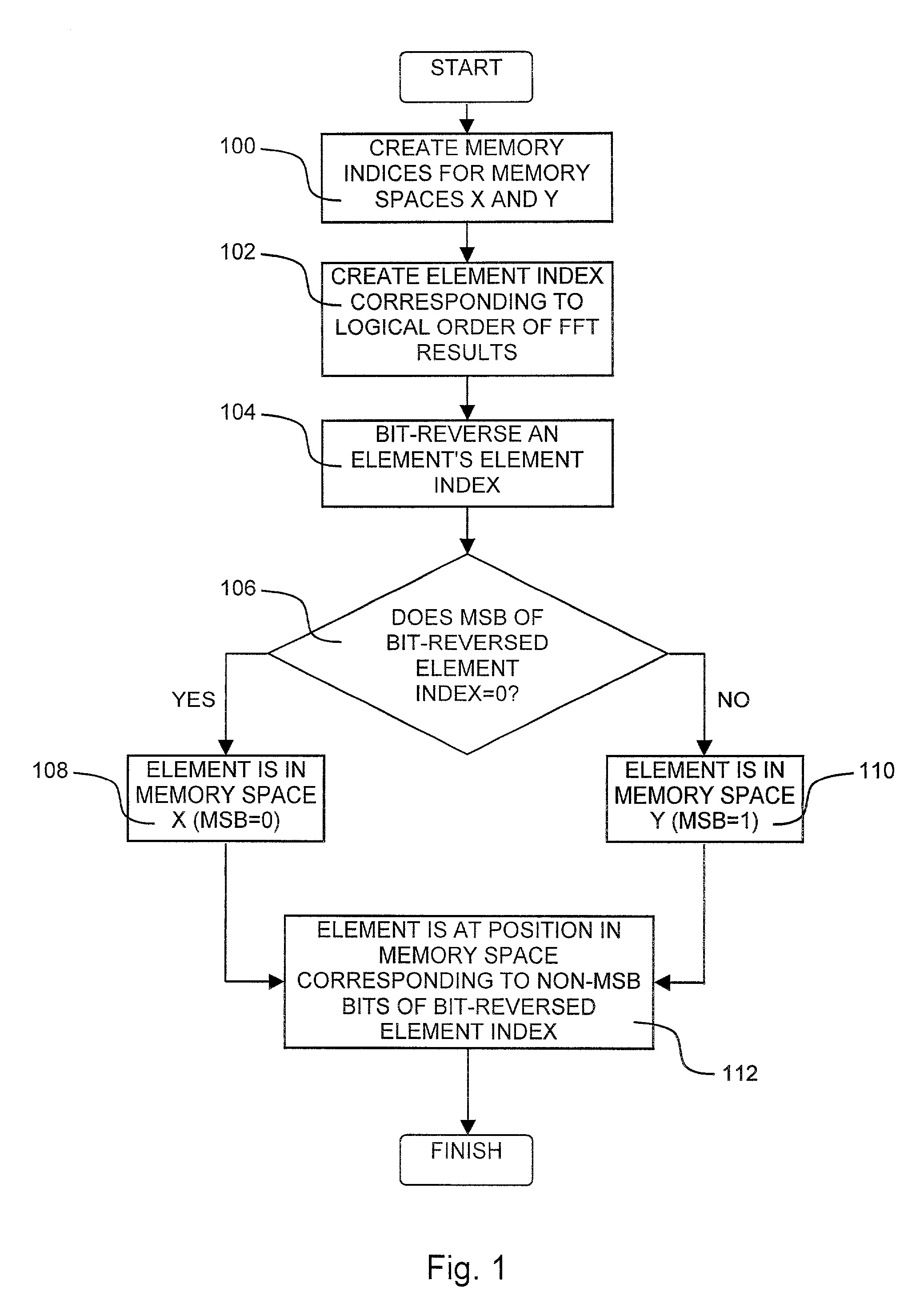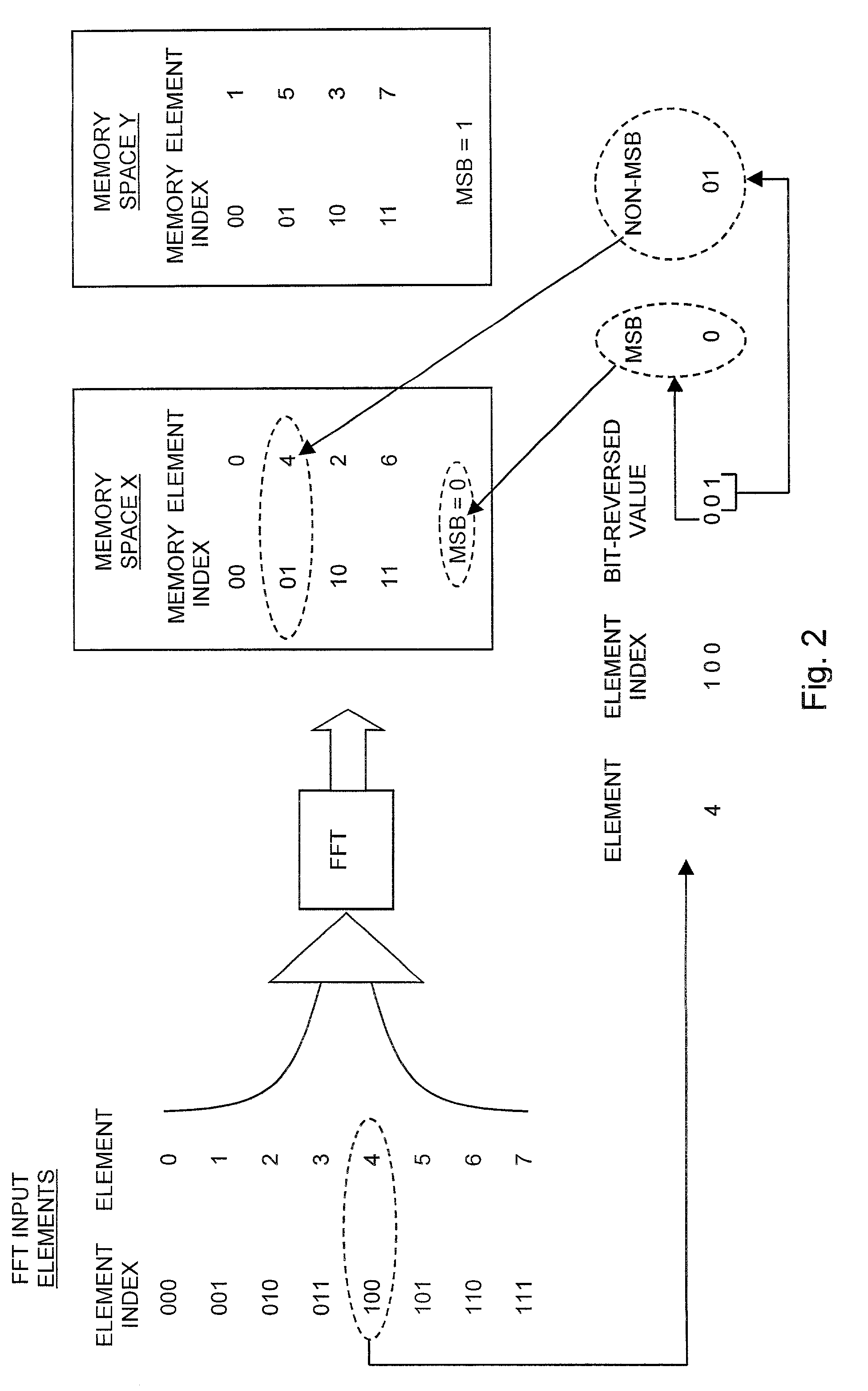Bit-reversed indexing in a modified harvard DSP architecture
a bit-reverse indexing and harvard dsp technology, applied in the field of dsp, can solve the problems of additional clock cycles, inability to determine the position of a particular element using standard bit-reversing techniques, and inability to achieve the effect of a clock cycl
- Summary
- Abstract
- Description
- Claims
- Application Information
AI Technical Summary
Problems solved by technology
Method used
Image
Examples
Embodiment Construction
[0021]In the following detailed description, numerous specific details are set forth in order to provide a thorough understanding of the invention. However it will be understood by those of ordinary skill in the art that the present invention may be practiced without these specific details. In other instances, well-known methods, procedures and components have not been described in detail so as not to obscure the present invention.
[0022]Reference is now made to FIG. 1 which is a flowchart illustration of a method of bit-reversed indexing in a modified Harvard DSP architecture, operative in accordance with a preferred embodiment of the present invention, and additionally to FIG. 2 which is a pictorial flow illustration of an exemplary implementation of the method of FIG. 1, useful in understanding the present invention. The method of FIG. 1 proceeds from the point at which FFT results are stored in arrays j1 and j2 in memory spaces X and Y respectively as shown in Table E below. In t...
PUM
 Login to View More
Login to View More Abstract
Description
Claims
Application Information
 Login to View More
Login to View More - R&D
- Intellectual Property
- Life Sciences
- Materials
- Tech Scout
- Unparalleled Data Quality
- Higher Quality Content
- 60% Fewer Hallucinations
Browse by: Latest US Patents, China's latest patents, Technical Efficacy Thesaurus, Application Domain, Technology Topic, Popular Technical Reports.
© 2025 PatSnap. All rights reserved.Legal|Privacy policy|Modern Slavery Act Transparency Statement|Sitemap|About US| Contact US: help@patsnap.com



